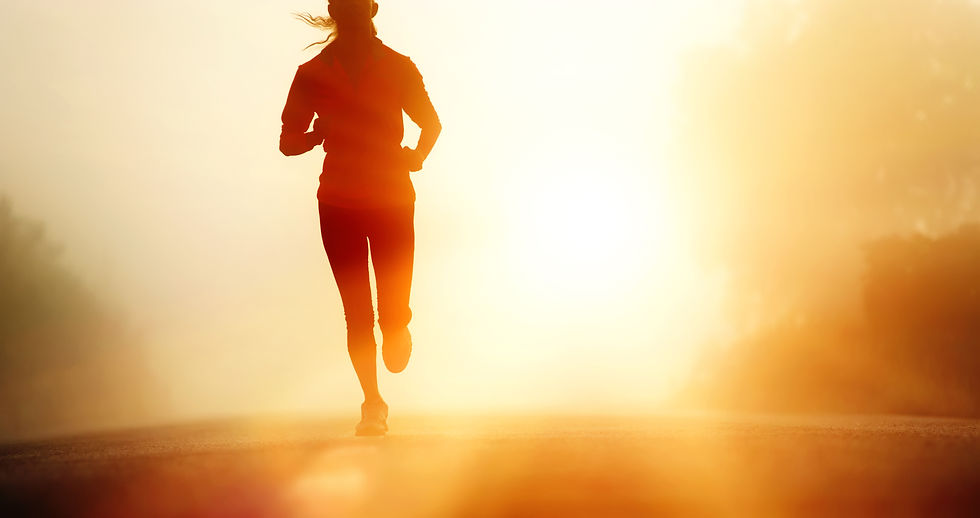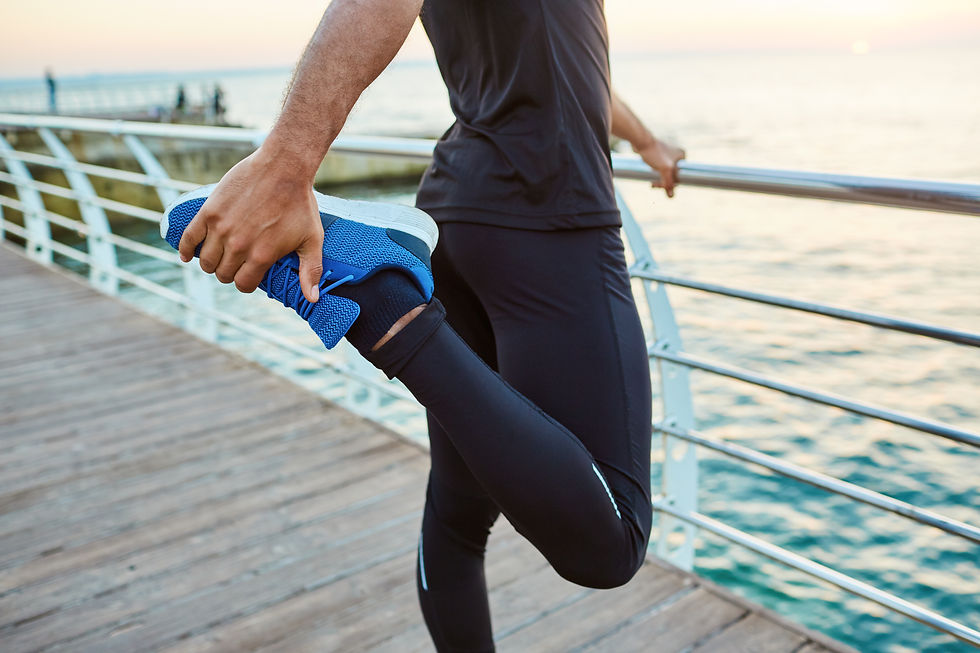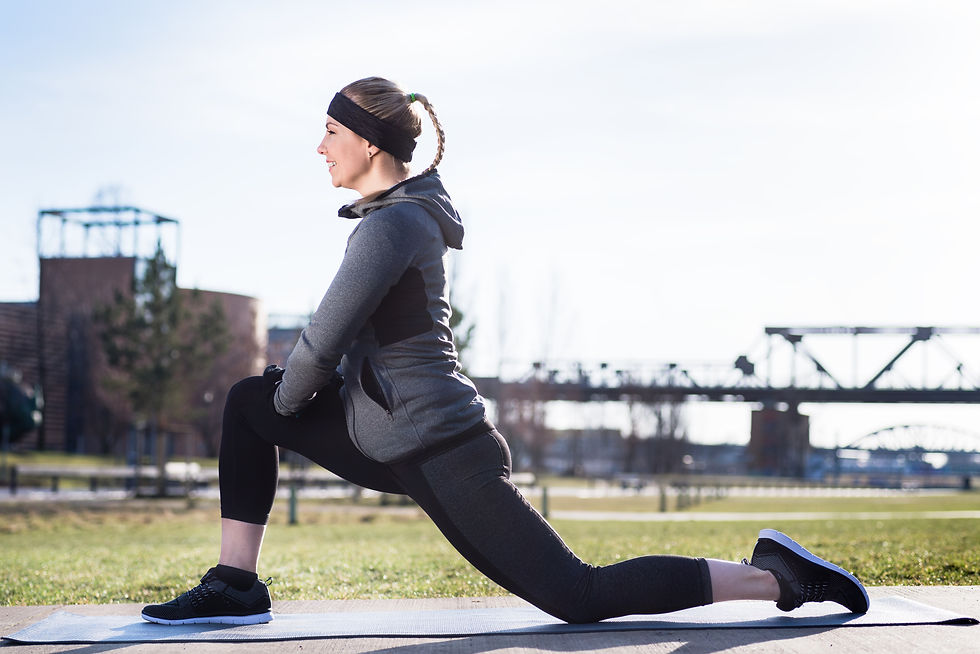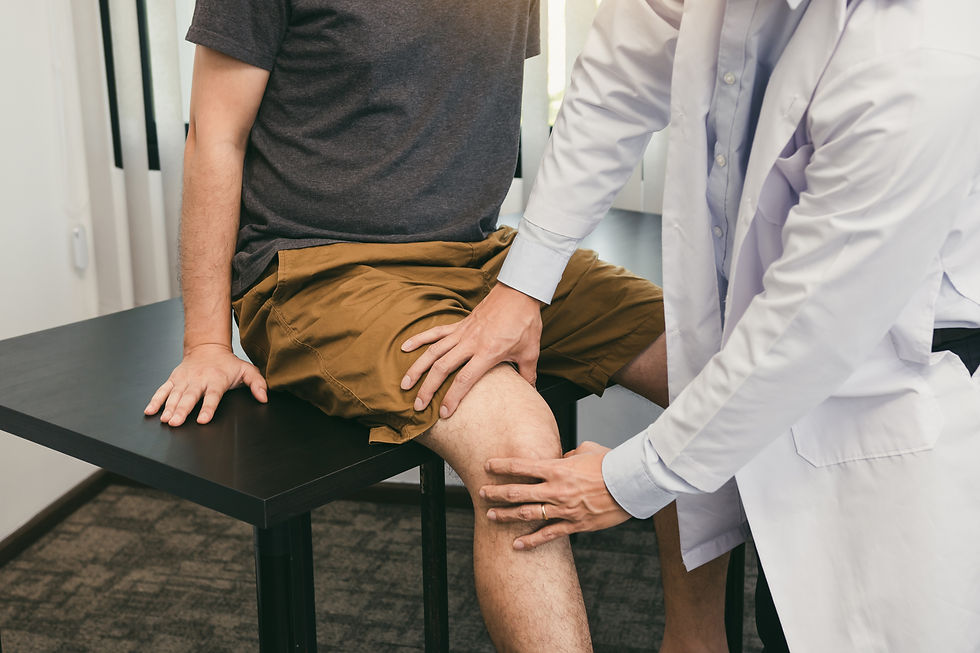We're well into 2023 and now getting the much needed longer and brighter days again in the Pacific Northwest. If you're here, you're obviously looking to pick up running or contemplating about getting back into it again.

As running has become my primary form of exercise, I'll share some insights and easy tips from my personal and clinical experience as a runner and chiropractor that will hopefully help you approach running with a better outlook as well as avoid some injuries.
Reasons to Be Positive About Running
Having a good mindset will help make you more successful at running. Many people you talk to are often quick to say running is "hard or boring". It can be on the surface (har har), but here are three of my positives that might help you if you've been on the fence about it.
1. It's very accessible.
At minimum, all you need are some shoes and comfortable exercise clothing to go do it. Even on a tight budget, a decent set of shoes to start out with won't set you back that much- especially if you're just starting out or doing lesser mileage. If you have lots of experience buying shoes then it won't be difficult for you to find your pair online, but sometimes it helps to get somewhere to try a few one to find the right type of shoe for you. Some good local options in our area are Roadrunner Sports, Super Jock N' Jill, and REI- which all have locations on both sides of Lake Washington.
Almost anywhere in your neighborhood can be made into a running route but its usually not too hard to find a park, trail, or track within 5-10 minutes away from your home or work. You don't need to spend extra money on a membership, and you don't need to lose time out of your day driving to and from the gym. You probably got a lot going on already, so it won't take much to get out on your run.
Because it's so accessible, you'll run into runners of all skill levels and all walks of life out there running. Most runners are friendly and will exchange a wave or smile with you when you pass each other. You don't experience that much on the roads here anymore!
2. Experience where you live, as well as nature.
You'll find that many running paths can often be found at the intersection of man and nature and can lead to new perspectives in the cities you live and work in.
In fact, you probably drive down the same road everyday to the point where it feels like a monotonous movie playing back everyday that you don't even process much at all in your head anymore. There are many instances I have found that it's a completely different experience when you're running on a path next to the same road on foot because you'll have time to observe the things you usually wouldn't or can't when driving.
You'll also find that many good running trails that cut through cities that are nicely maintained. It's one way to enjoy the public works that you pay for and makes where you live not feel so far and inaccessible at times.
Some of my favorite trails to run on that connect multiple cities are:
I-90 Trail (Bellevue, Mercer Island, and Seattle)
Sammamish River Trail (Issaquah, Redmond, Woodinville)
Kirkland Cross-Corridor Trail (Kirkland, Bellevue)
3. Get a Break from Distractions
You're always having to do something and be somewhere, and it can feel you're going a bunch of different directions but also feel like you're not going anywhere. Running gives you time to be present in your own body, focusing on the current task and your environment while giving you a true sense of progression and accomplishment. Sure you'll think about things or listen to music to change your mood, but in the end you're going to be paying more attention to your breathing, pace, and where you're stepping (watch out for those pine cones!). Having something to do that physically makes it difficult to respond to notifications, emails, and texts is a welcome break in our digital age.
Tips To Ensure a Good Running Experience
I've seen countless patients with acute injuries from running as well as those with chronic injuries that have ultimately led them to cease running altogether. I've even experienced a few injuries myself early on as a runner. My goal as a runner these days is to ensure continued enjoyment and longevity with running. Here are my three most very basic pieces of advice I think have high yield for a novice or intermediate runners.
1. Slow down
I think most of us learned our running habits in physical education class where it was about going out there and giving it your best on the running days. Unfortunately, this is probably where most of the disdain for running comes from. Some people are gifted with the right genetics and physical training that they could go out and knock out any type of run without an issue, but most of us need to develop our bodies a bit.
For many years I always went out there an ran hard whether it was short or long distance. While there are benefits to training like this sometimes, you'll hit a bunch of walls in your training if you eventually want to increase your speed and distance.
These days, I spend the majority of my running in Zone 2 heart rate range which is going to be slower than what many uninformed runners are used to running at. This is the range where your body is able to use oxygen and fat to supply the energy demands of the slow twitch muscle fibers that will help you keep going. It is also known as the Aerobic training zone.
Keeping yourself in the Zone 2 range can be stupidly hard. Sometimes you may feel like it's just barely faster than walking and sometimes you will have to walk to stay in it (usually big hills)- but you'll feel like you can go forever once your body starts to adapt to this training zone. The great thing is if you're starting out, or getting back into running again, this won't be as hard on your body and will help create a good foundation for you to build off of later.
The more you train in this zone, the faster you will get over time as your body will make beneficial adaptations to your cells and vascular system; and you become even more adept at using fat and oxygen while staying in the same heart rate zone. This will leave you with extra gas in the tank to push harder later on. But don't just take my word for it:
You can calculate where your Zone 2 range should be by going through the math here:
Estimated Max Heart Rate = 220 - Your Age
Resting Heart Rate: You can take your carotid or brachial pulse for 15" x 4 while you're relaxed.
Bottom Limit of Zone 2 = Resting HR + (Max HR - Resting HR) x 0.60
Upper Limit of Zone 2 = Resting HR + (Max HR - Resting HR) x 0.70
Not a trick question! PEMDAS.
If you wear a smart watch, you can probably obtain a more accurate max heart rate and resting heart rate if you are wearing it often. Many will even tell you what zone you are training in as well.
2. Make time to stretch
Over the years I've become a big proponent of stretching. I'm not talking about 10-30 seconds because that won't be game-changing stretching. I've done some prior research into mobility and stretching before but the TLDR is if you really want to get the most of out of your stretching, you need to aim for somewhere between 2-4 minutes per muscle.
Seems like an eternity? It will feel that way when you start, so I recommend going up in 30 seconds intervals over time.
When you run you're generating a lot of repetitive contractions over the course of time in many muscles. Some of these are big contractions, some of these are smaller ones. Whatever the case, there's going to be a lot of damage, repair, and growth that accumulates as muscles adapt to their task. The end result is going to be very tight and firm muscles if you don't do any sort of mobility work. As a runner, you want strong, but compliant muscles to be handle all the repetitive shortening and lengthening cycles to avoid muscle and tendon inflammation and strain- which are very common injuries in runners.
The 3 muscle groups that I think every runner should be stretching at minimum are your quadriceps, hip flexors, and calves. It's not to say the other muscles aren't important and shouldn't be addressed, but with most patients having IT desk jobs, these are where I often see pains and injuries. These stretches are not complicated and you probably may be doing them already. To reiterate, it's the time component where the benefit is. I usually spend 40-60 minutes doing this twice a week to maintain my body- but it has been absolutely worth it.
Quadriceps
One of the ways your body manages the impact of running is to utilize a knee bend during contact to absorb the ground reaction force. The role of the quadriceps are to help control the speed of this knee bend so you do not buckle each time you make contact. This often makes for very sore quads after a run, especially if you were running hard. Because the knee cap is contained in the tendon of the quadriceps, having tighter quadriceps can often be a contributor to knee pain because of the increased compression the knee cap may experience while tracking across the knee joint. Loosening up the quads will take some of that pressure off.

This is the most basic quad stretch, but it still works. You can get more fancy with laying on your stomach using a strap, going into a half-saddle position, or if you're pretty flexible already, the full-saddle position with both knees bent under you. I generally like to do a half-saddle position on the carpeted stairs of my house.
Hip Flexors
These help to perpetuate, and in many people, initiate leg swing. As most people also sit a lot these days for school and work, it is already a muscle that tends to be tighter. The repetitive cycles of running compounds the issue and makes it worse and is a very common area of complaint.
Many patients struggle to get 20 seconds with this half-kneeling hip flexor stretch, let alone enough extension at the hip where the thigh is getting behind your glutes like you see in this image.

It used to be agony the first 2 months of doing this stretch, but once you have worked your way up to 4 minutes, your hips will be much looser and happier. You can rest one hand on your knee and another on a Yoga block if that helps you maintain the position easier.
Calves
The superficial and deep calf muscles help us to push off and generate power during running as well as help to control and absorb shock in the foot when we contact the ground. It's common to develop tightness in these calf muscles as well as tendon irritation once the miles start adding up. Fortunately, it is easy to get a good stretch for everything back there in one shot.
You can do the heel drop one at a time on the stairs like the picture below, but I like to stand on the first step and drop both heels just knock both sides out at the same time with full body weight.

3. Get your body examined by a professional
While anyone can run, it's important to have a health professional that can examine your body to help you identify areas where you may need to pay extra attention to- even more so if there is something that's currently nagging you.

As a clinician and a runner, I often observe large variances in people's anatomy and biomechanics that can affect running form, and ultimately the way forces are distributed through the body. Factors that can contribute to such are your genetics, daily habits, prior injuries, or training imbalances. As a result, every person would benefit from a detailed examination to help identify areas they need to improve on or be careful of to reduce injury. It's not uncommon that I will examine the foot, ankle, knee, hips, and core and trunk to help you determine if you need to strengthen certain areas for endurance or control, improve flexibility in others, knowing where to focus maintenance work on, or even altering training habits. No two runners are alike and every person usually has opportunities to improve somewhere.
Knowledge of your body is going to help you know what you're getting into and help minimize your risk of injury!
-----------------
So there you have it. I hope you've found my simple tips helpful and if you need help resolving any running injuries whether it's plantar fasciitis, Achille's tendinitis, knee pain, hip pain, or some strain- I invite you to book an appointment with me today. Otherwise, I'll catch you on the trails sometime.
Thoughtfully written... without AI, by your friendly local chiropractor in Kirkland.
-Dr. Frank Wen.


Коментарі